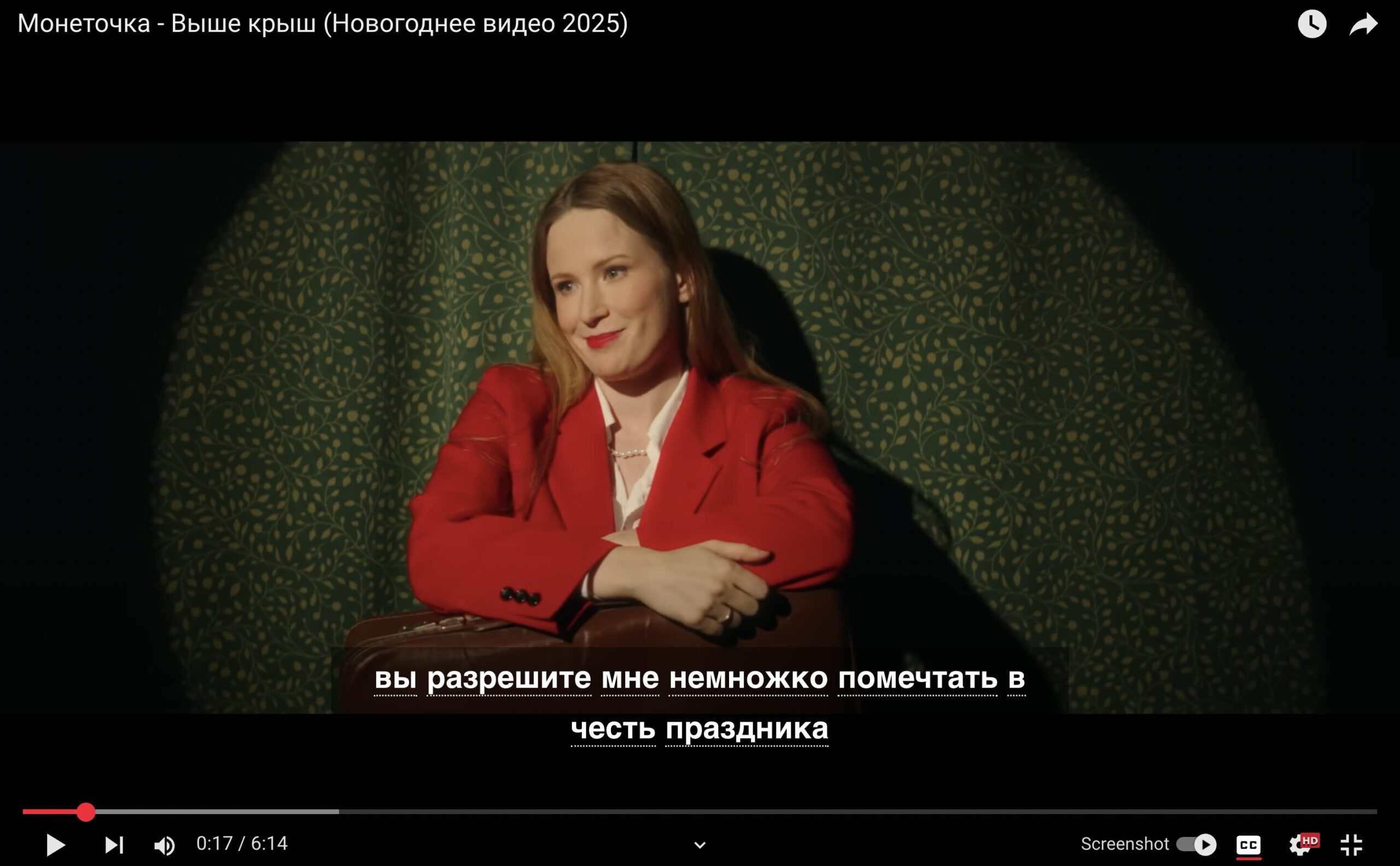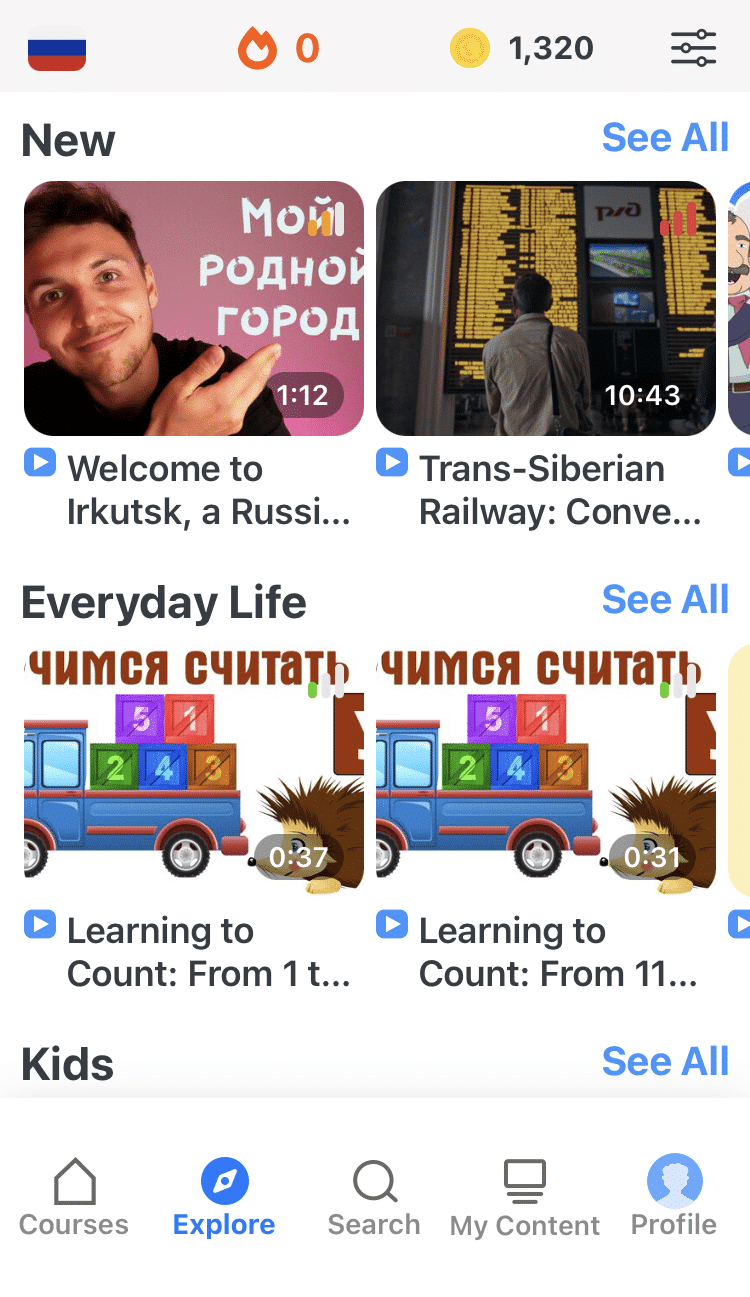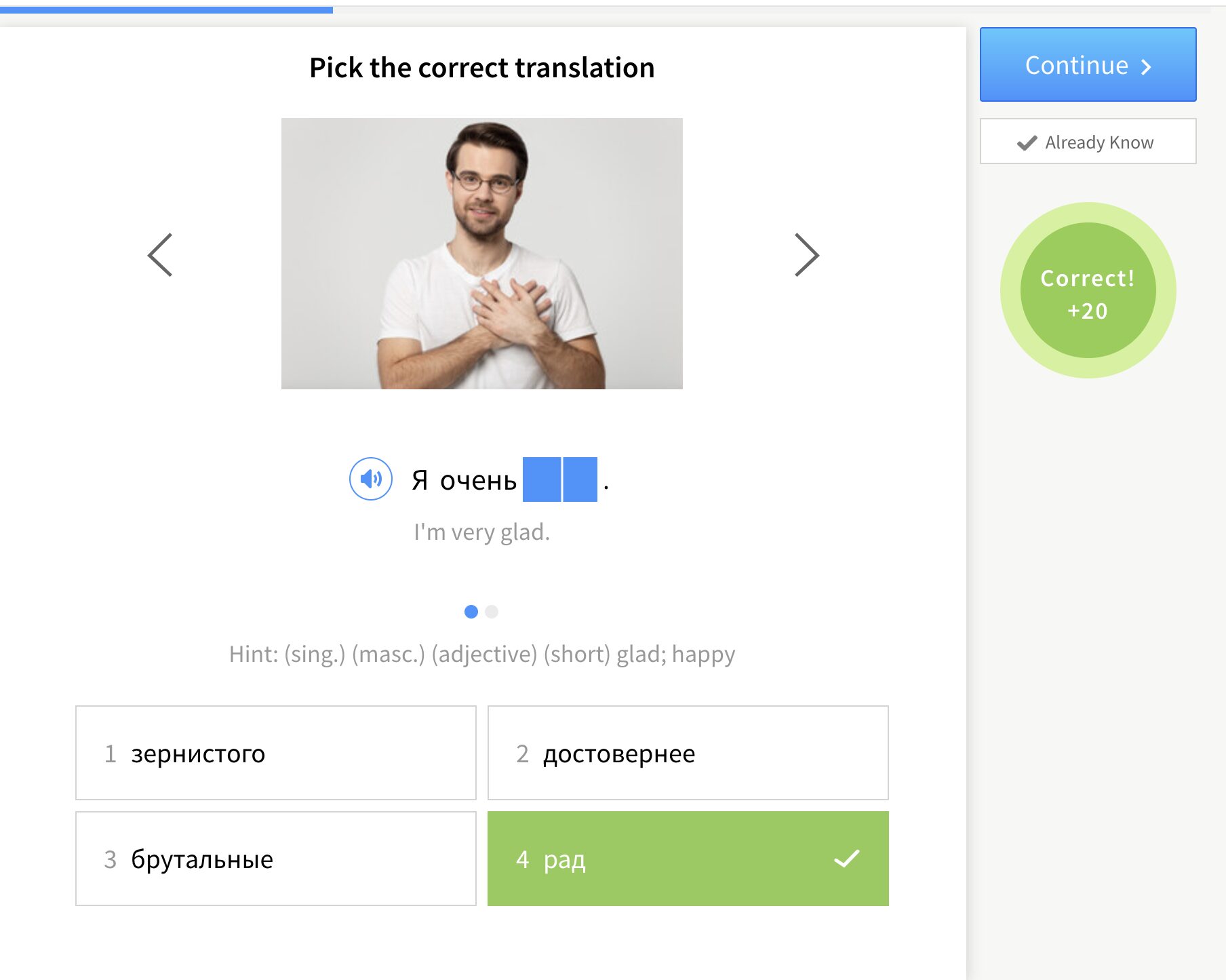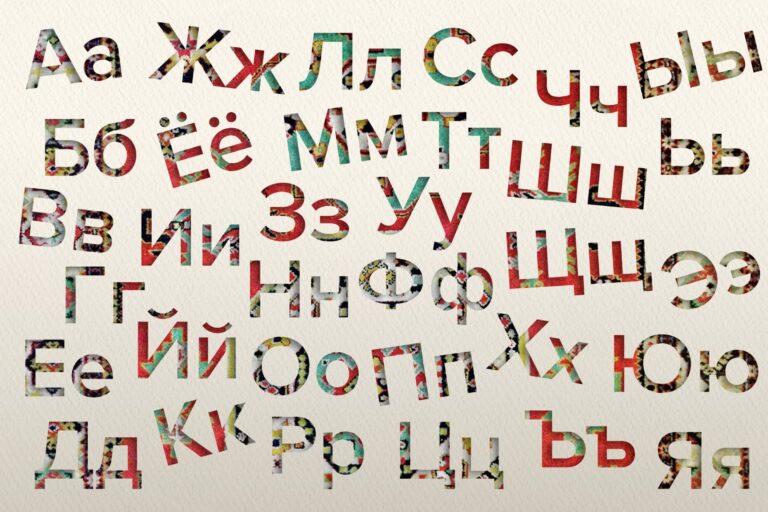Russian Numbers: How to Count to 1000 and Beyond
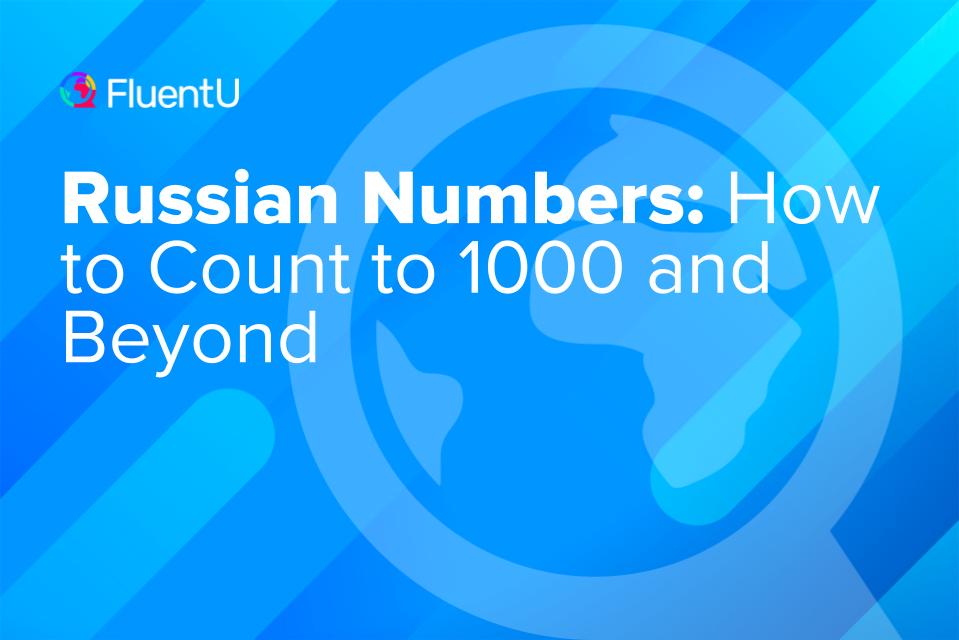
You may already know that the Russian language can get messy pretty fast, even when it comes to simple things like numbers and colors and so on. But for right now, we’ll keep things simple.
Let’s go through all the basics of counting and using numbers to specify quantities of things.
Download: This blog post is available as a convenient and portable PDF that you can take anywhere. Click here to get a copy. (Download)
1 to 10 in Russian
| (1) один | (6) шесть |
| (2) два | (7) семь |
| (3) три | (8) восемь |
| (4) четыре | (9) девять |
| (5) пять | (10) десять |
11 to 20 in Russian
| (11) одиннадцать | (16) шестнадцать |
| (12) двенадцать | (17) семнадцать |
| (13) тринадцать | (18) восемнадцать |
| (14) четырнадцать | (19) девятнадцать |
| (15) пятнадцать | (20) двадцать |
20 to 100 in Russian
Note that the first column of numbers below is made up of numbers from the lists above, as you’d probably expect.
| (21) двадцать один | (30) тридцать |
| (22) двадцать два | (40) сорок |
| (23) двадцать три | (50) пятьдесят |
| (24) двадцать четыре | (60) шестьдесят |
| (25) двадцать пять | (70) семьдесят |
| (26) двадцать шесть | (80) восемьдесят |
| (27) двадцать семь | (90) девяносто |
| (28) двадцать восемь | (100) сто |
You can practice and test out your skills with this song that covers all the numbers from one to one hundred.
100 to 1,000 in Russian
| (100) сто | (600) шестьсот |
| (200) двести | (700) семьсот |
| (300) триста | (800) восемьсот |
| (400) четыреста | (900) девятьсот |
| (500) пятьсот | (1,000) тысяча |
1,000+ in Russian
| (1,000,000) миллион | (1,000,000,000) миллиард |
There are a ton more videos on YouTube you can use to practice your Russian numbers until they’re perfect.
This one helps you practice with really simple math problems and visuals.
Russian Ordinal Numbers
Finally, let’s have a look at the ordinals in Russian. Ordinal numbers also have three genders of masculine, feminine and neuter. Here they are in their masculine form:
| (1st) первый | (6th) шестой |
| (2nd) второй | (7th) седьмой |
| (3rd) третий | (8th) восьмой |
| (4th) четвертый | (9th) девятый |
| (5th) пятый | (10th) десятый |
You could imagine that the Russian ordinals act like adjectives in that the endings change depending on the gender, number (singular and plural) and the case of the noun it’s describing.
- – ая ( первая , вторая… ) for the feminine form.
- – ое ( первое , второе… ) for the neuter form
- – ые ( первые , вторые… ) for the plural form
It’s important to note that the endings for the word “third” is a bit of an exception. It’s третья in the feminine form, третье in the neuter form and третьи in the plural form.
This would be how the endings of the ordinals would change depending on their case. Here’s an example of the masculine form, первый:
- Nominative case – первый
- Genitive case – первого
- Dative case – первому
- Accusative case (inanimate) – первый
- Accusative case (animate) – первого
- Instrumental case – первым
- Prepositional case – первом
Genders and Plurals with Russian Numerals
Inflecting for gender
You may already know that nouns in Russian generally inflect for gender, number and case.
That’s sure a lot, but luckily, gender is easy with numerals. You only have to worry about it at all for two numbers: one and two. It all depends on the gender of the noun you’re pairing them with.
The number one takes three different forms for gender.
The number two only takes two different forms.
Okay, but what does all of this actually mean? Well, consider the following:
Один рубль — one ruble
Два рубля — two rubles
Рубль is a masculine noun. As you can see with the examples above, the numbers in front of “ruble” and “rubles” are written out in their masculine form to match.
But, look at what happens here:
Одна копейка — one kopeck
Две копейки — two kopecks
Копейка , on the other hand, is a feminine noun. So, instead of using the masculine forms of the numbers “one” and “two” in front of it, we use their feminine forms.
One more experiment:
Одно число — one number
Два числа — two numbers
Число is a neuter noun. So, we use the neuter form of “one” and “two.”
In all instances outside of the possibilities displayed above, numbers don’t change for gender at all. They only exist in one form. So, that’s all there is to that!
The genitive singular
In Russian, when you’re specifically talking about numbered quantities of something, there are two different types of plurals.
The first kind of plural is only used with numbers two through four, and the other one is used for everything after that (with a few exceptions, such as 22, 43 or 104, for example).
The first type of plural corresponds with the genitive case in the singular.
If you go back to the examples in the last section, all of the second examples are written in this first type of plural: рубля , копейки and числа .
Here are some more examples:
Три доллара (three dollars)
Два года (two years)
The two nouns above are masculine, and their default masculine singular forms end in consonants.
If a masculine noun ends in a consonant in the singular, all you have to do to put it in the genitive singular is to add -а:
Simple enough, right? That’s no harder than adding “s” to plurals in English.
It does get a little more complicated, though. Of course, it does.
If a neuter noun ends in о, take away the о and add -а:
Одно слово (one word)
Два слова (two words)
If a masculine noun ends in й or ь, or a neuter noun ends in е, then you take away the й, ь or е and add -я:
Один чай (one tea)
Два чая (two teas)
For feminine nouns ending in ь, you remove ь and add -и:
Одна вещь (one thing)
Две вещи (two things)
For feminine nouns ending in а, remove the а and tack on -ы. Unless there’s a guttural like к, г, х or a sibilant like ж or ш at the end, in which case you just add -и again:
Одна вода (one water)
Две воды (two waters)
That doesn’t cover absolutely everything and there are exceptions, but that’s the gist of it!
The genitive plural
The plural for nouns of which you’re specifying five or more is formed using the genitive plural. Here are some of the basic rules of formation.
Many masculine nouns ending in a consonant take -ов in the genitive plural:
Пять долларов (five dollars)
Шесть подарков (six gifts)
If they end in й, they take -ев or -ёв, and the й needs to be removed first:
Один чай (one tea)
Десять чаёв (ten teas)
Masculine nouns ending in ж, ч, ш, щ take -ей. So do feminine or masculine nouns ending in ь. You just have to remove the ь first if it’s there:
Один рубль (one ruble)
Семь рублей (seven rubles)
For feminine nouns ending in а or neuter nouns ending in о, that final vowel just gets dropped in the genitive plural:
Одна вода (one water)
Восемь вод (eight waters)
Now, another thing to know is that some nouns use completely different words for the genitive plural in some contexts, like the word for “years.”
You can use both год and лет when talking about age and amount of years, but it depends on the number you’re talking about. The general rule is:
Above that, the word used is based off the last digit. For example:
Один год (one year) or двадцать один год (21 years)
Два года (two years) or двадцать два года (22 years)
Пять лет (ten years) or двадцать пять лет (25 years)
You don’t have to remember all of this right away, but having a general idea of it will help you to recognize plurals. And, if you want to cheat, you can always look up the genitive declensions for a noun using Cooljugator.
You can also look at these grammar tables for more information about the genitive plural.
If you want to see most of the numbers in context and how they would be used in real life, you can have a look at FluentU, a language learning program that uses authentic content to help you learn Russian.
FluentU takes authentic videos—like music videos, movie trailers, news and inspiring talks—and turns them into personalized language learning lessons.
You can try FluentU for free for 2 weeks. Check out the website or download the iOS app or Android app.
P.S. Click here to take advantage of our current sale! (Expires at the end of this month.)
With all of these tools you should get the hang of Russian numbers in no time, but make sure to practice. In other words, it all adds up and everything counts!
Download: This blog post is available as a convenient and portable PDF that you can take anywhere. Click here to get a copy. (Download)
And One More Thing...
If you're like me and love learning Russian through real-world content, FluentU is a game-changer. With FluentU, you're not just memorizing Russian words—you’re learning how native speakers actually use them.
With our newest feature, you can now bring FluentU’s interactive tools to any subtitled content on YouTube or Netflix—or even import YouTube videos directly into your FluentU account!
You’ll also get access to a huge variety of Russian content in our curated video library, from movie trailers to news clips, music videos, and more. The best part? FluentU makes this native-language content accessible for learners of all levels.
While you watch, you can tap on any word in the interactive subtitles to see a definition, an image, audio, and useful example sentences. Want to practice new words later? Add them to your flashcards with one click. No more pausing to look up new words!
And FluentU helps you actually remember what you learn with personalized quizzes, plenty of example sentences, and extra practice with the words you find difficult.
Ready to start learning Russian in a more natural, immersive way? Try FluentU on your computer or tablet, or download the FluentU app from the App Store or Google Play. Click here to take advantage of our current sale! (Expires at the end of this month.)

